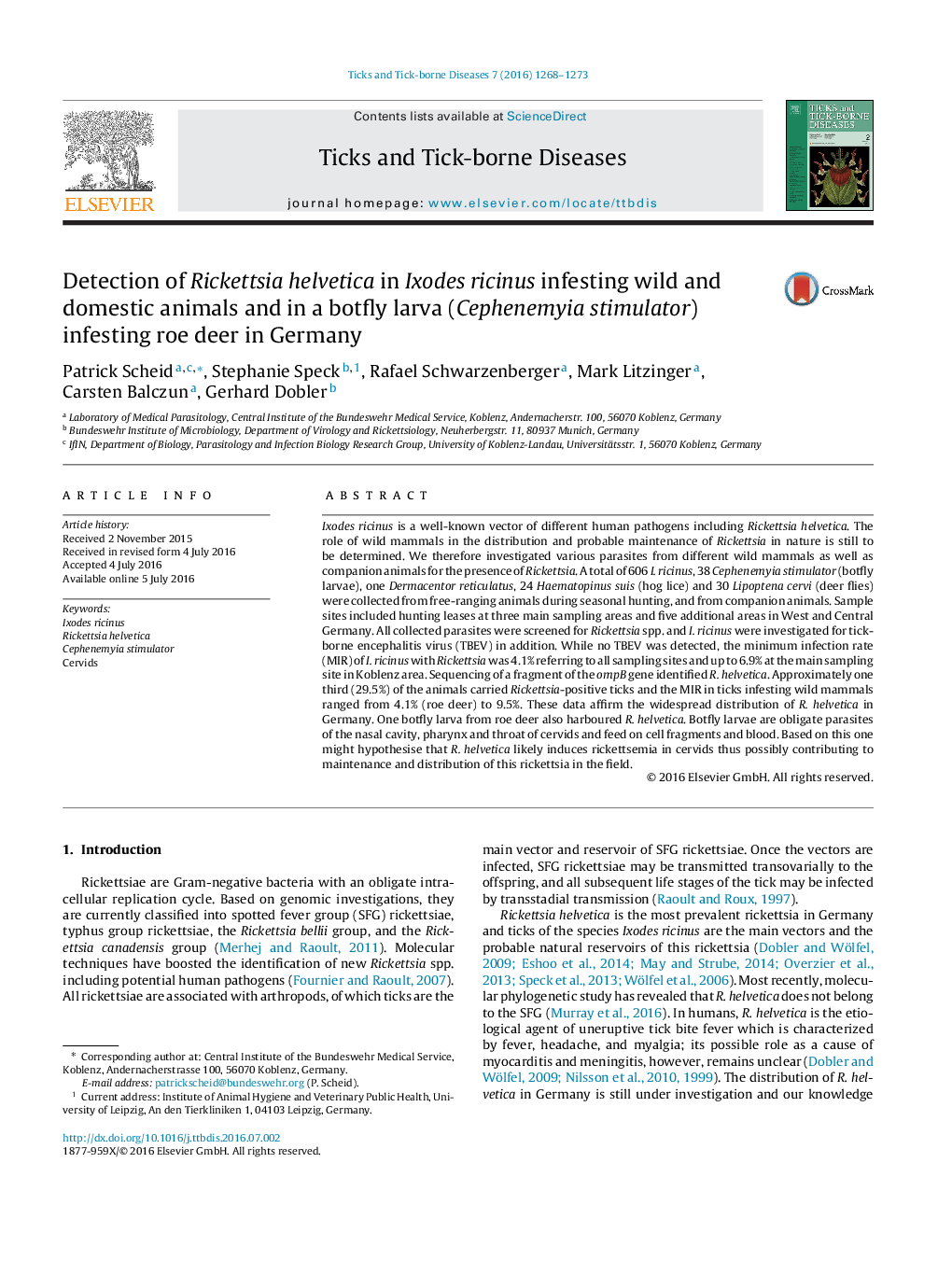| Article ID | Journal | Published Year | Pages | File Type |
|---|---|---|---|---|
| 5546524 | Ticks and Tick-borne Diseases | 2016 | 6 Pages |
Ixodes ricinus is a well-known vector of different human pathogens including Rickettsia helvetica. The role of wild mammals in the distribution and probable maintenance of Rickettsia in nature is still to be determined. We therefore investigated various parasites from different wild mammals as well as companion animals for the presence of Rickettsia. A total of 606 I. ricinus, 38 Cephenemyia stimulator (botfly larvae), one Dermacentor reticulatus, 24 Haematopinus suis (hog lice) and 30 Lipoptena cervi (deer flies) were collected from free-ranging animals during seasonal hunting, and from companion animals. Sample sites included hunting leases at three main sampling areas and five additional areas in West and Central Germany. All collected parasites were screened for Rickettsia spp. and I. ricinus were investigated for tick-borne encephalitis virus (TBEV) in addition. While no TBEV was detected, the minimum infection rate (MIR) of I. ricinus with Rickettsia was 4.1% referring to all sampling sites and up to 6.9% at the main sampling site in Koblenz area. Sequencing of a fragment of the ompB gene identified R. helvetica. Approximately one third (29.5%) of the animals carried Rickettsia-positive ticks and the MIR in ticks infesting wild mammals ranged from 4.1% (roe deer) to 9.5%. These data affirm the widespread distribution of R. helvetica in Germany. One botfly larva from roe deer also harboured R. helvetica. Botfly larvae are obligate parasites of the nasal cavity, pharynx and throat of cervids and feed on cell fragments and blood. Based on this one might hypothesise that R. helvetica likely induces rickettsemia in cervids thus possibly contributing to maintenance and distribution of this rickettsia in the field.
